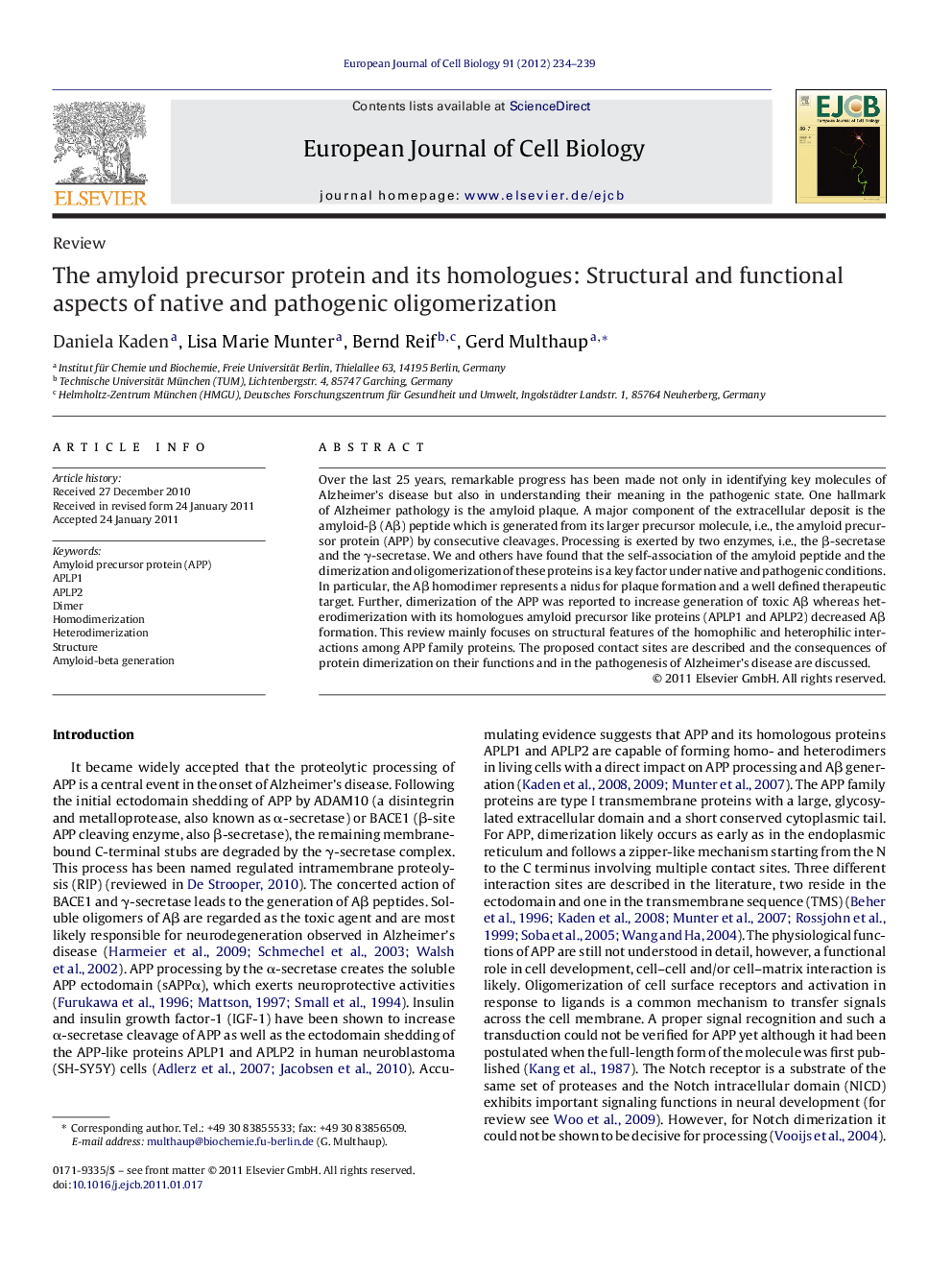| Article ID | Journal | Published Year | Pages | File Type |
|---|---|---|---|---|
| 2178425 | European Journal of Cell Biology | 2012 | 6 Pages |
Over the last 25 years, remarkable progress has been made not only in identifying key molecules of Alzheimer's disease but also in understanding their meaning in the pathogenic state. One hallmark of Alzheimer pathology is the amyloid plaque. A major component of the extracellular deposit is the amyloid-β (Aβ) peptide which is generated from its larger precursor molecule, i.e., the amyloid precursor protein (APP) by consecutive cleavages. Processing is exerted by two enzymes, i.e., the β-secretase and the γ-secretase. We and others have found that the self-association of the amyloid peptide and the dimerization and oligomerization of these proteins is a key factor under native and pathogenic conditions. In particular, the Aβ homodimer represents a nidus for plaque formation and a well defined therapeutic target. Further, dimerization of the APP was reported to increase generation of toxic Aβ whereas heterodimerization with its homologues amyloid precursor like proteins (APLP1 and APLP2) decreased Aβ formation. This review mainly focuses on structural features of the homophilic and heterophilic interactions among APP family proteins. The proposed contact sites are described and the consequences of protein dimerization on their functions and in the pathogenesis of Alzheimer's disease are discussed.
